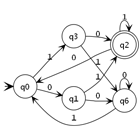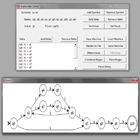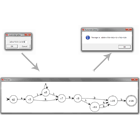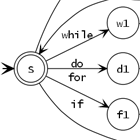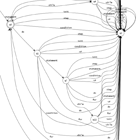Automata Editor
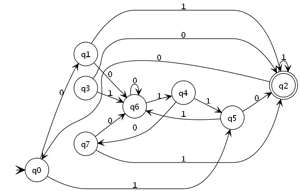
Automata Editor was my course project for the Theory of Computation course. It is a toolkit for working with deterministic and non-deterministic finite automata, as well as (classic) regular expressions.
Features
- Manually or programmatically create and edit DFA and NFA.
- Convert from NFA to DFA.
- View the created automata as a graph in real time as you edit.
- Save and load automata definition or its graph.
- Optimize deterministic automata to the minimal number of states.
- Evaluate automata on sample strings.
- Convert from (classic) regular expressions to automata.
- Construct the equivalent regular expression from any NFA.
Usage
If you're using the Windows binary distribution, run
Automata Editor.exe. If you're using the source distribution, you
can run gui.pyw to access the GUI or import any of the modules in
Python to access the interface programmatically. There are no documents
detailing the interface right now, but it's fairly simple so a skim through
the source should be enough to get started.
For graph drawing to work, the dot program from GraphViz must be
in your path.
Sample machines and regexes can be found in the samples folder.
The regex language used is the classic one, whose special characters are
limited to the Kleene star (*) for matching zero or more
characters, the alteration (+) for matching either everything on
the left side or everything on the right side, and parentheses ((
and )) for grouping and limiting alterations.
Implementation
The program is written in Python, using TkInter for the interface and Graphviz for drawing graphs. Graphviz is called directly as a separate process, rather than using a wrapper library, a choice that may not have been the best, in retrospect.
Requirements
The compiled Windows distribution below is standalone. To run from source (on Windows or UNIX), you will need:
- Python 2.x
- The Python Imaging Library
- Graphviz
-
If you want to build it on Windows using
build.py, you will also need py2exe. -
When building, you need to update the Graphviz path at the top of
util.py, regardless of your platform.
